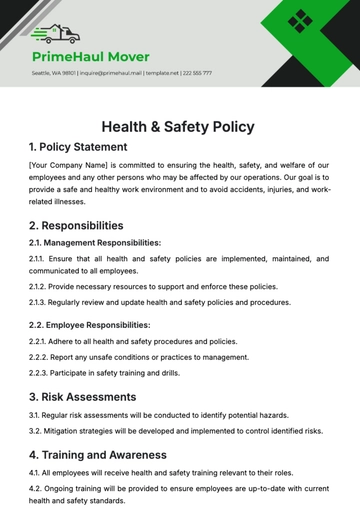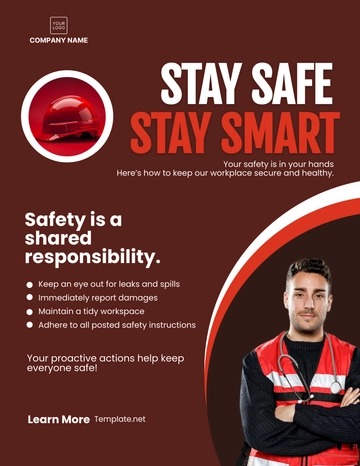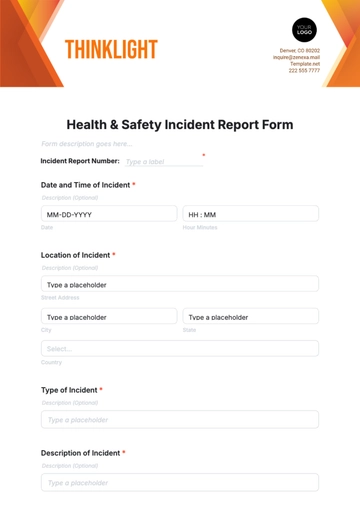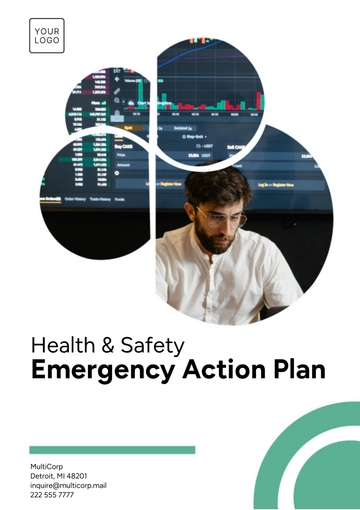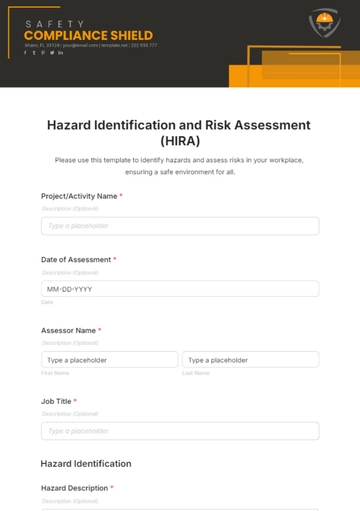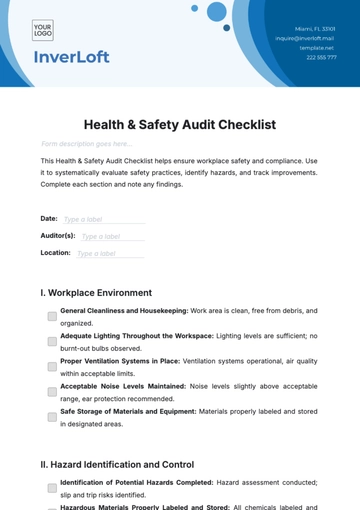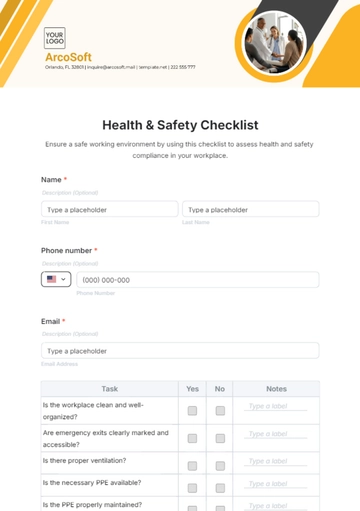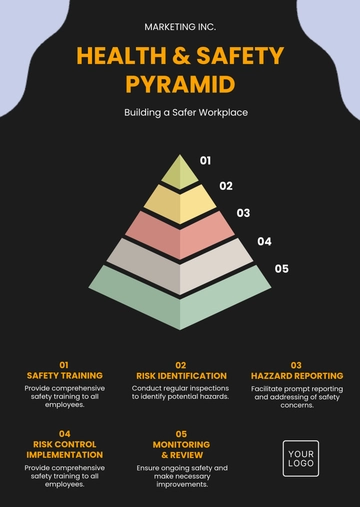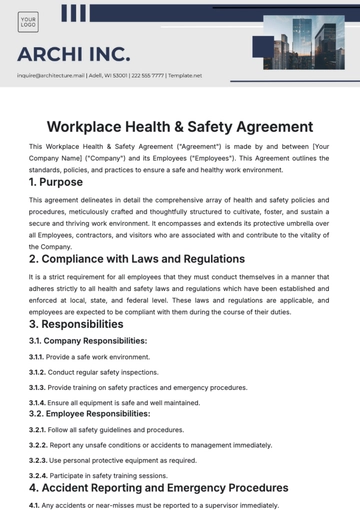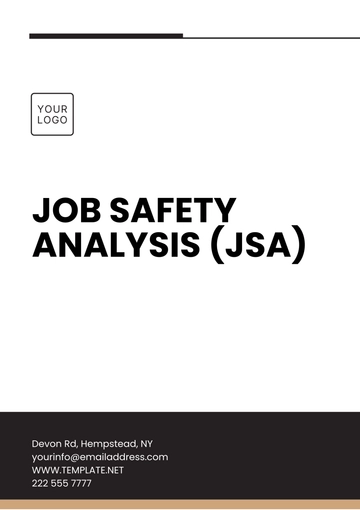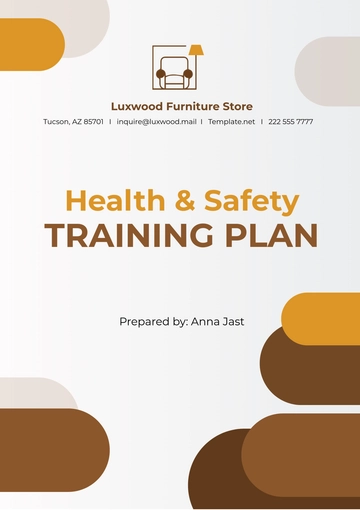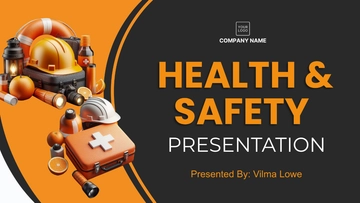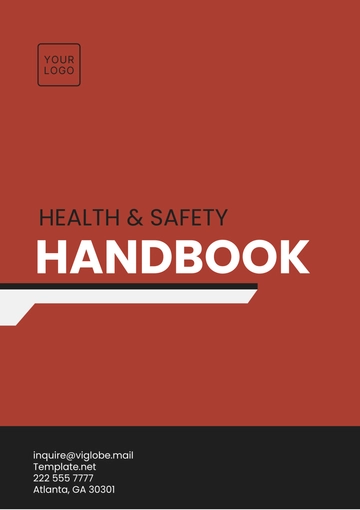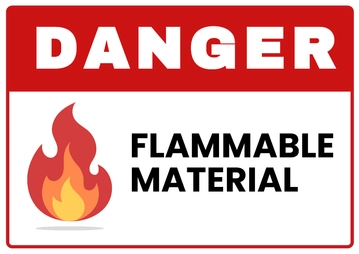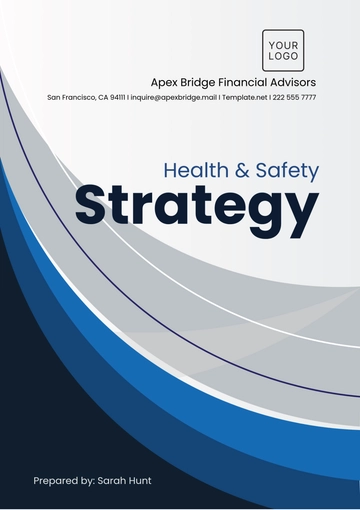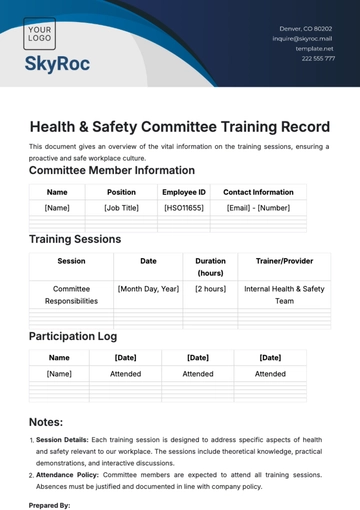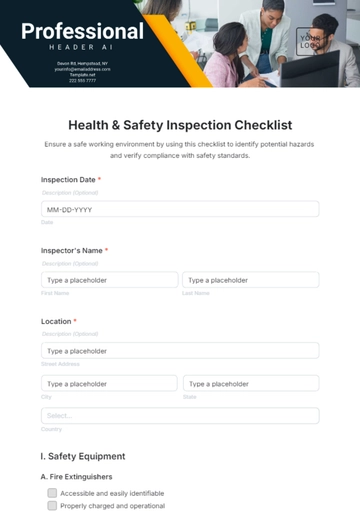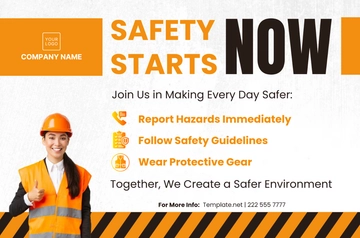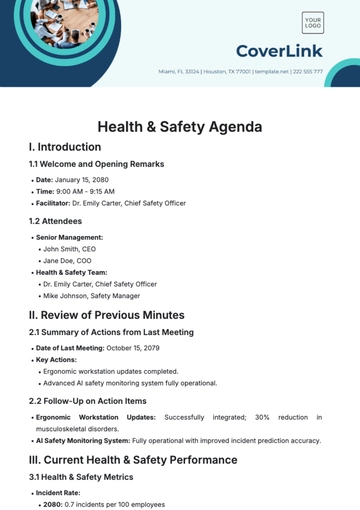Free Health & Safety Communication Protocol Development
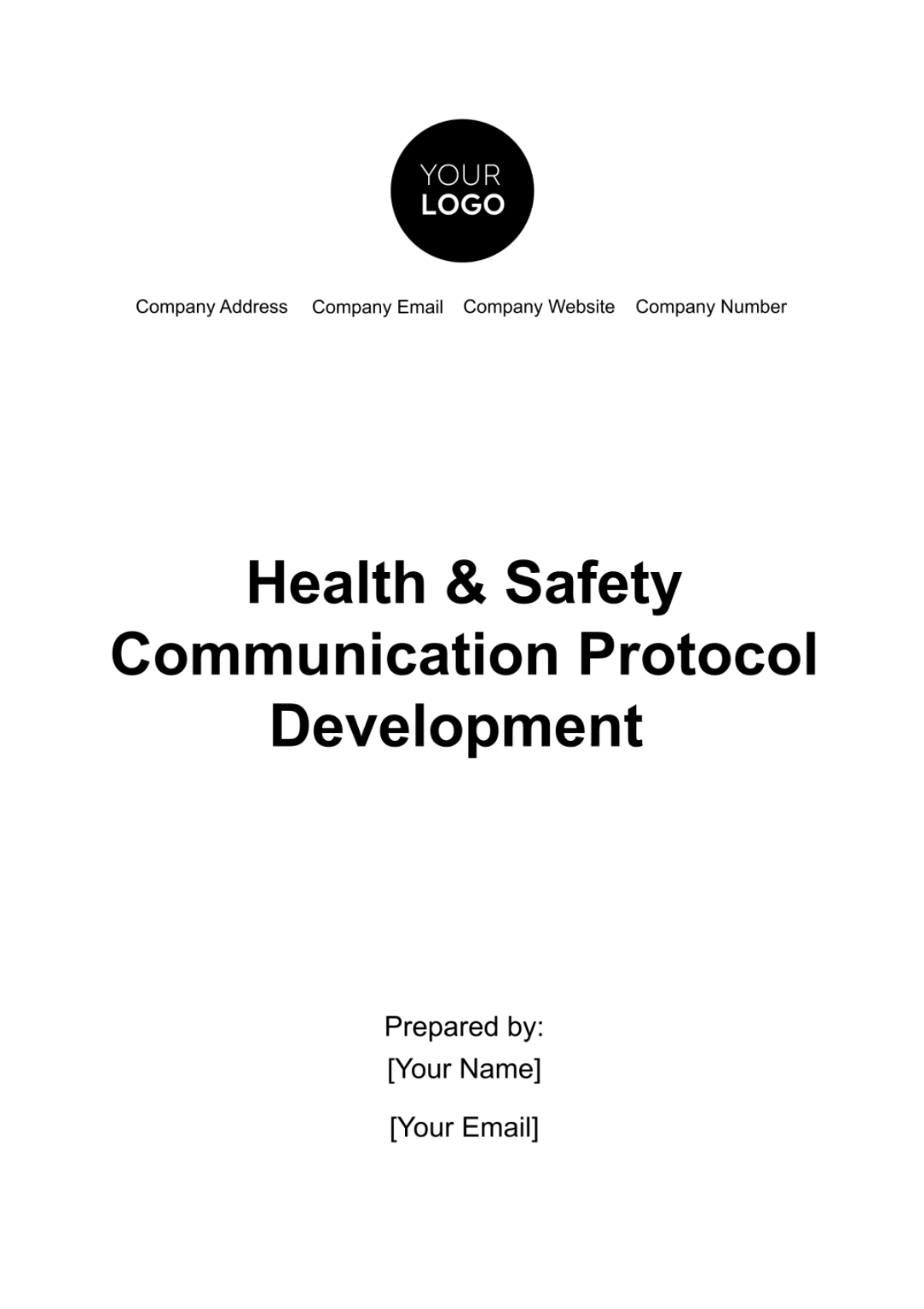
I. Introduction
A. Purpose
The purpose of this document is to provide a comprehensive framework for the development of an effective communication protocol. By offering clear guidance and essential considerations, this document equips organizations with the tools to establish a robust communication structure that prioritizes health and safety.
B. Scope
This resource encompasses the key elements involved in crafting a Communication Protocol tailored to workplace health and safety needs. It delves into the nuances of communication strategies, incident reporting procedures, and emergency response plans, ensuring a holistic approach that adapts to the specific requirements of diverse workplace settings.
C. Objectives
Offer insights into creating efficient and standardized incident reporting procedures.
Provide guidelines for developing effective emergency communication plans.
Offer recommendations for fostering an environment of transparent communication.
Introduce mechanisms for continuous feedback, promoting a culture of openness.
D. Target Audience
This is intended for organizational leaders, safety officers, communication teams, and other stakeholders involved in shaping workplace health and safety practices. It caters to a diverse audience, offering insights and best practices that can be tailored to the unique needs and structures of different organizations.
II. Communication Channels
The table below outlines the diverse channels employed to disseminate crucial health and safety information, ensuring accessibility and impact.
Channel | Description |
Digital Platforms | Intranet, email newsletters, and dedicated portals for real-time updates. |
Effective communication channels are the backbone of a successful Communication Protocol. The synergy among these channels creates a robust and adaptable communication framework. This diversity not only accommodates different learning preferences but also addresses various scenarios, fostering a comprehensive approach to health and safety communication.
III. Reporting Procedures
A. Incident Reporting
Procedure Initiation
Employees initiating incident reports should promptly identify incidents, taking immediate actions to ensure personal safety and secure the scene. The reporting timeline must be clearly defined, emphasizing the importance of timely reporting for effective investigation and resolution.
Reporting Mechanisms
Various reporting mechanisms, including online forms, direct contact with supervisors, and designated reporting stations, should be easily accessible to employees. Communication channels should be well-publicized, promoting transparency and ensuring that reporting is straightforward and efficient.
Documentation Requirements
Clear documentation requirements, encompassing incident details, involved parties, and corrective actions taken, ensure a thorough understanding of incidents. Emphasizing the importance of accuracy and completeness in documenting incident-related information facilitates effective analysis and continuous improvement efforts.
B. Hazard Reporting
Identification Process
Employees should be educated on recognizing and reporting potential hazards within their work environment. Implementing a systematic process for hazard identification encourages proactive reporting and enhances overall safety awareness.
Prioritization of Hazards
Establish a system for prioritizing reported hazards based on severity, potential impact, and urgency aids in resource allocation. Clear criteria for identifying and assessing hazards should be communicated, aligning with organizational goals and safety objectives.
Feedback and Follow-Up
Develop a feedback mechanism to acknowledge employees who report hazards and inform them of the follow-up actions. Timely communication regarding the resolution of reported hazards promotes trust and reinforces the importance of hazard reporting.
C. Safety Concern Reporting
Channels for Expressing Concerns
Clearly communicate channels through which employees can express safety concerns, such as suggestion boxes, dedicated contacts, or anonymous reporting systems. Promote an open-door policy, encouraging employees to communicate safety concerns without fear of reprisal.
Anonymity and Confidentiality
Clearly articulate the organization's commitment to maintaining the anonymity and confidentiality of employees who report safety concerns. Establish protocols to safeguard the identities of employees reporting concerns to encourage open communication. Communicate the measures in place to protect employees from retaliation for reporting safety concerns.
Resolution Process
Define a systematic process for addressing and resolving safety concerns promptly. Regularly communicate updates on the resolution process to involved employees, fostering transparency and trust. Establish feedback mechanisms also to allow employees to express concerns about the resolution process itself, enabling continuous improvement.
IV. Emergency Communication
A. Emergency Response Plan
Plan Overview
Provide a comprehensive overview of the organization's emergency response plan, emphasizing key procedures and roles. Ensure all employees are familiar with the plan, holding regular training sessions and drills to enhance preparedness.
Communication Chain of Command
Clearly define the communication chain of command during emergencies, outlining roles and responsibilities. Emphasize the importance of clear lines of communication to avoid confusion and ensure swift, coordinated responses.
B. Notification Systems
Activation Protocols
Clearly define the criteria for activating the emergency notification system, ensuring a swift and appropriate response to different types of emergencies. Establish clear protocols for decision-makers to authorize the activation of the notification system. Regularly review and update activation criteria to align with evolving organizational needs and potential risks.
Communication Modes
Outline the communication modes employed during emergencies, including alarms, messages, and public address systems. Ensure redundancy in communication modes to account for potential failures or disruptions in one channel. Regularly test and verify the functionality of each communication mode to maintain their effectiveness.
Testing and Maintenance
Detail the schedule and procedures for regularly testing and maintaining the emergency notification systems. Conduct routine drills to simulate system activation and verify the reception of notifications by employees. Establish a feedback loop to capture insights from testing and maintenance activities, enabling continuous improvement of the notification systems.
C. Evacuation Procedures
Evacuation Routes and Assembly Points
Clearly define evacuation routes and designated assembly points for employees during emergencies. Regularly review and update evacuation maps to reflect changes in the physical layout of the workplace. Conduct drills to ensure that employees are familiar with evacuation routes and assembly points.
Communication During Evacuation
Define communication protocols to be followed during evacuations, including headcounts and status updates. Emphasize the importance of maintaining communication to ensure the safety and accountability of all employees. Provide training on the use of communication devices and systems during evacuations.
Post-Evacuation Communication
Detail communication procedures for employees after evacuation, providing further instructions, updates, and a debriefing on the incident. Establish a post-evacuation communication plan to address potential concerns, questions, and the transition back to normal operations. Encourage feedback from employees about their experience during evacuations, utilizing insights for continuous improvement.
V. Employee Engagement
A. Communication Platforms and Channels
Leverage modern digital tools, internal messaging systems, and collaborative platforms to facilitate seamless communication. Encourage employees to share feedback, ideas, and concerns through these channels, fostering a sense of inclusivity and engagement.
B. Recognition and Rewards
Regularly acknowledge outstanding contributions to communication initiatives. This can include commendations in team meetings, public recognition through digital channels, or even non-monetary rewards. Recognizing employees for their efforts fosters a positive atmosphere and reinforces a commitment to effective communication practices.
C. Employee Feedback Mechanisms
Utilize advanced feedback tools that allow employees to share their thoughts on communication processes anonymously. Regularly analyze this feedback to identify areas for improvement, ensuring that employees feel their opinions are valued and considered in shaping communication strategies.
VI. Performance Metrics and Evaluation
A. Key Performance Indicators (KPIs)
Define clear and measurable Key Performance Indicators (KPIs) to assess the effectiveness of the Communication Protocol. KPIs may include incident reporting rates, response times, and employee feedback. Regularly analyze these metrics to gauge the protocol's impact on safety communication and adjust strategies accordingly.
B. Feedback Mechanisms
Implement robust feedback mechanisms to gather insights from employees at all levels regarding their experiences with the Communication Protocol. Surveys, focus groups, and suggestion boxes can provide valuable qualitative data. Act on this feedback to address concerns, refine communication strategies, and ensure continuous improvement.
C. Regular Evaluation
Conduct regular evaluations of the Communication Protocol to identify areas for improvement and adaptation. This process should involve all stakeholders and consider evolving organizational needs. Regular reviews, coupled with a commitment to continuous improvement, ensure that the protocol remains aligned with the organization's goals and industry best practices.
D. Benchmarking
Benchmark the Communication Protocol against industry standards and best practices. This comparative analysis can reveal areas of strength and opportunities for enhancement. Benchmarking ensures that the protocol remains at the forefront of effective workplace communication, adapting to changes in regulations, technologies, and organizational dynamics.
VII. Key Stakeholders
A. Identification and Roles
Identify key stakeholders involved in the Communication Protocol, clearly defining their roles and responsibilities. This includes safety officers, communication teams, and department heads. Ensure a collaborative approach by fostering open lines of communication among stakeholders, promoting a unified commitment to effective communication practices.
B. Training for Key Stakeholders
Implement specialized training programs for key stakeholders to deepen their understanding of the Communication Protocol. Provide insights into their unique roles in ensuring protocol effectiveness. Empower stakeholders to serve as advocates, fostering a shared responsibility for promoting and sustaining a culture of safety through effective communication.
C. Continuous Engagement
Establish mechanisms for continuous engagement with key stakeholders, such as regular meetings and feedback sessions. Actively seek their input on protocol improvements and updates. Engaged stakeholders are more likely to champion the protocol within their respective domains, contributing to its successful integration into daily operations.
VIII. Documentation and Record-Keeping
A. Standardized Documentation Procedures
Standardize procedures for documenting communication-related activities, ensuring consistency across the organization. Clearly outline what information should be documented, when, and by whom. Standardization facilitates easy retrieval of information and supports comprehensive audits.
B. Incident and Resolution Logs
Maintain detailed incident and resolution logs, documenting reported incidents, the actions taken, and their outcomes. These logs serve as invaluable references for evaluating the effectiveness of the Communication Protocol. Regularly review and analyze these records to identify trends, assess response times, and enhance future communication strategies.
C. Compliance Documentation
Establish a comprehensive system for documenting compliance with the Communication Protocol. This includes evidence of training completion, adherence to reporting procedures, and successful execution of emergency communication protocols. Well-documented compliance not only ensures regulatory adherence but also builds trust in the effectiveness of the protocol.
- 100% Customizable, free editor
- Access 1 Million+ Templates, photo’s & graphics
- Download or share as a template
- Click and replace photos, graphics, text, backgrounds
- Resize, crop, AI write & more
- Access advanced editor
Introducing Template.net's Health & Safety Communication Protocol Development Template, a comprehensive solution for establishing effective safety communication strategies. Fully customizable and editable in our Ai Editor Tool, this template enables businesses to create tailored protocols for seamless communication of safety procedures and protocols. Enhance workplace safety and compliance with ease, ensuring clear and consistent communication across all levels. Simplify your safety protocols with our user-friendly platform.

